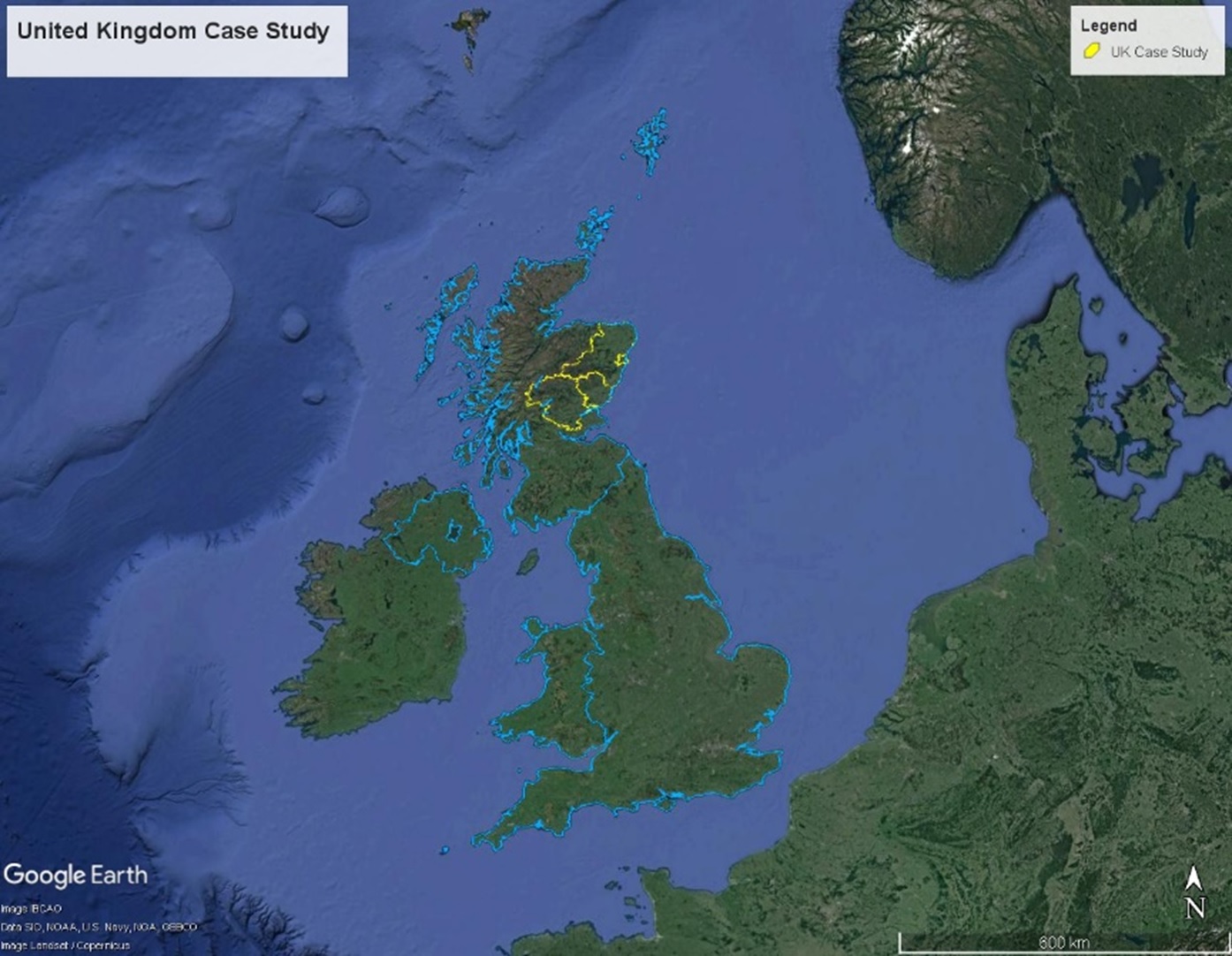Case study dilemma and research questions
Producing public goods whilst maintaining viable production of private goods, and securing economic and social sustainability at a farm level.
Key characteristics and sustainability issues of the farming system
The geographic area of the case study is Grampian and Tayside in north-east Scotland. The area has a focus on primary production of agriculture, forestry and fishing, which are characteristics of the landscapes and cultural identity of the areas. The case study focuses on farm systems of mixed crops and livestock (FADN Farm type codes 83 and 84) and general cropping (FADN Farm type code 16). The area comprises 12,360 farm holdings, equivalent to 24.2% of holdings in Scotland, of which 1,574 are mixed holdings (36.2% of those in Scotland) and 1,022 are general cropping (59.3% of those in Scotland). In 2017, 67,000 people were employed in farming (including owners), of which 19,500 (29.1%) were in Grampian and Tayside.
The management of land is an important factor in the management of the landscape of the area, and thus to tourism and recreation. Surveys of visitors to major parts of Scottish Natural Heritage, in its landscape character assessment of part of the area notes: “Aberdeenshire’s land is therefore a vital resource, providing jobs, homes, schools and recreation for the local population. Its landscape is an essential part of this land resource, enhancing the well-being of the inhabitants and providing scenic qualities that attract visitors and tourists.” (SNH, 1998). In 2016, the total visitor nights to the area was 2.63m, with an associated expenditure of £697m, with ‘scenery and landscape’ identified as the top attraction.
The area includes conventional, low input and organic farming practices, and businesses with combinations in different proportions. Different stages of transition between practices are also evident, including those in transition from convention to organic status, and some in transition in the other direction.
Key actors involved
Actors identified to be of relevance to the case study with respect to the dilemma are drawn from the Agri-food value chain; Farmers; Science, innovation, advisory, Authorities and administration; and Civic society.
The specific actors Retail / Food & Drink sector; individual farmers and land managers and their representative bodies; financial services; local food processing; marketing groups; Opportunity North East
Research; independent advisors; machinery rings; Non-Departmental Public Bodies; public sector forestry organisations; North East Scotland Agricultural Advisory Group; departments of public authorities; environmental NGOs and groups representing collective interests; agricultural consultants; organisations providing accreditation and advice.
Download
- UNISECO H2020 policy brief: Addressing barriers of culture, mindset and institutions through effective co-creation forums and networking, in North-east Scotland, UK
- UNISECO H2020 policy brief: Tackling the shortage of skilled and informed labour to deliver transitions to agro-ecological farming systems in North-east Scotland, UK
References
- Scottish Government (2014). Scotland Food & Drink Strategy, Good Food Nation
- Scottish Government (2014). Agri-Environment Climate Scheme (AECS), within the Scottish Rural Development Programme (2014-2020).
- Scottish Rural Development Programme (SRDP) 2014-2020, delivers Pillar 2 of the EU Common Agricultural Policy (CAP). Specific measures of relevance are under the Agri Climate Environment Scheme (£355 m)
- Scottish Government Scotland’s Organic Action Plan (2016-2020)
- Scottish Government (2018) Climate Change Bill, Scottish Government.
- Scottish Natural Heritage (1998). Environmental Resources Management, South and Central Aberdeenshire: Landscape Character Assessment. pp.140.
Related newsitems
- https://uniseco-project.eu/news/109/engaging-the-uk-multi-actor-platform-in-identifying-characteristics-of-strategies-for-agro-ecological-transitions-of-arable-farming-systems
- https://uniseco-project.eu/news/12/uniseco-presented-at-scotland-s-biennial-land-use-and-the-environment-conference
Videos
UNISECO MAP Member's statement - UK 01 - Peter Chapman - Agri Renewables
UNISECO MAP Member's statement - UK 02 - Roger-Polson - Multiple Benefits
UNISECO MAP Member's statement - UK 03 - Peter Chapman - Soil Health
UNISECO MAP Member's statement - UK 04 - Roger-Polson - Trageting Subsidies
UNISECO MAP Member's statement - UK 05 - Peter Chapman - Knowledge Exchange
UNISECO MAP Member's statement - UK 06 - Roger-Polson - AE Production Systems
CASE STUDY: UNITED KINGDOM

